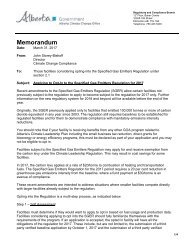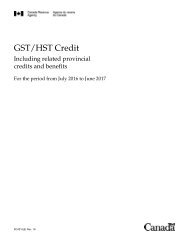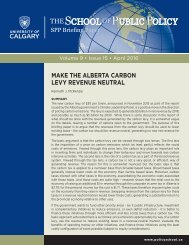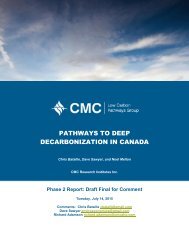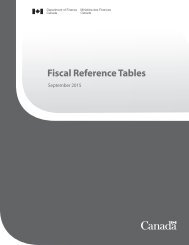China’s National Emissions Trading System
Chinas_National_ETS_Implications_for_Carbon_Markets_and_Trade_ICTSD_March2016_Jeff_Swartz
Chinas_National_ETS_Implications_for_Carbon_Markets_and_Trade_ICTSD_March2016_Jeff_Swartz
You also want an ePaper? Increase the reach of your titles
YUMPU automatically turns print PDFs into web optimized ePapers that Google loves.
Global Economic Policy and Institutions<br />
17<br />
allowances. As a result, the total volume traded<br />
in the pilots to date is lower relative to the cap<br />
size as that in other markets like the EU and<br />
California.<br />
4.7 The <strong>National</strong> ETS: Background Information<br />
Since President Xi’s landmark announcement<br />
last September on establishing the national ETS,<br />
draft legislation for the national ETS has been<br />
tabled by the NDRC with <strong>China’s</strong> State Council.<br />
In order for the national ETS to go into effect,<br />
the State Council must approve the plans put<br />
forward by the NDRC. It is expected that these<br />
plans will be approved at some point in 2016<br />
after the 13 th Five-Year Plan also goes into<br />
effect.<br />
On 19 January 2016, the NDRC circulated a notice<br />
about <strong>China’s</strong> national ETS to all provincial DRCs,<br />
government administrations, the civil aviation<br />
administration, SOEs, and major industry<br />
associations in China. 44 The notice specified that<br />
firms from eight sectors and 18 sub-sectors, which<br />
consume over 10,000 tonnes of coal equivalent<br />
per year, would be included in <strong>China’s</strong> national<br />
ETS. Those sectors and subsectors include:<br />
1. Power (generation, heat-power cogeneration,<br />
and grid operators);<br />
2. Petrochemicals (crude oil refining and<br />
processing and ethylene);<br />
3. Chemicals (methanol, ammonia, and<br />
carbide);<br />
4. Iron and Steel;<br />
5. Non-ferrous metals (copper smelting and<br />
electrolytic aluminium);<br />
6. Building production and materials (clinker<br />
and plate glass);<br />
7. Pulp and Paper; and<br />
8. Aviation (civil commercial, cargo, and<br />
airports)<br />
The notice specifies that companies in each<br />
of these sectors should establish an internal<br />
“compliance plan” this year to prepare for the<br />
national ETS.<br />
The NDRC will determine the total quantity<br />
of allowances available to operators. Some<br />
allowances will be set aside for market<br />
stabilisation and a new entrants reserve/<br />
innovation fund. A hybrid free allocation/<br />
auctioning system will be implemented, and<br />
it is expected that the ETS will be moving<br />
towards auctioning over time after 2020. The<br />
total amount of allowances will be set by the<br />
NDRC only, and all allowances that are issued<br />
by the NDRC to emitters for free will have to be<br />
surrendered for compliance in the first phase.<br />
The NDRC is also looking at a pilot phase from<br />
2016 to 2017 where operators can perform a<br />
non-compliance trial of allowance allocation<br />
and surrender to familiarise themselves with<br />
the process. Under the national ETS, allowances<br />
that are not used for compliance can be traded<br />
in the open market on exchange platforms that<br />
have been approved by the government. China<br />
will use a mix of historical emission data and<br />
industrial benchmarks to decide how many<br />
CO 2<br />
allowances emitters will receive. In some<br />
sectors allowances will be grandfathered, while<br />
in others they will be benchmarked (power,<br />
petrochemicals, chemical manufacturers, and<br />
aviation).<br />
The national ETS will include most, if not all,<br />
of <strong>China’s</strong> SOEs where leakage is not expected<br />
to be an issue considering their ownership<br />
structure. Manufacturing costs in some sectors<br />
are still comparatively low in China. Hence,<br />
leakage might not be a large concern, but<br />
caution is still warranted amongst <strong>China’s</strong> ETS<br />
policymakers. There is a possibility that tradeexposed<br />
industries, such as aluminium or steel,<br />
will be put on a “carbon leakage list” like<br />
industries in the EU, but this information still<br />
rests on a final rule from the government which<br />
was not yet defined at the time of writing this<br />
publication.<br />
Free allocation will be determined by the NDRC,<br />
but provinces are required to send a list of which<br />
companies in their local regions will be included<br />
in the national ETS. The NDRC will operate a<br />
national registry. Revenues from allowance



